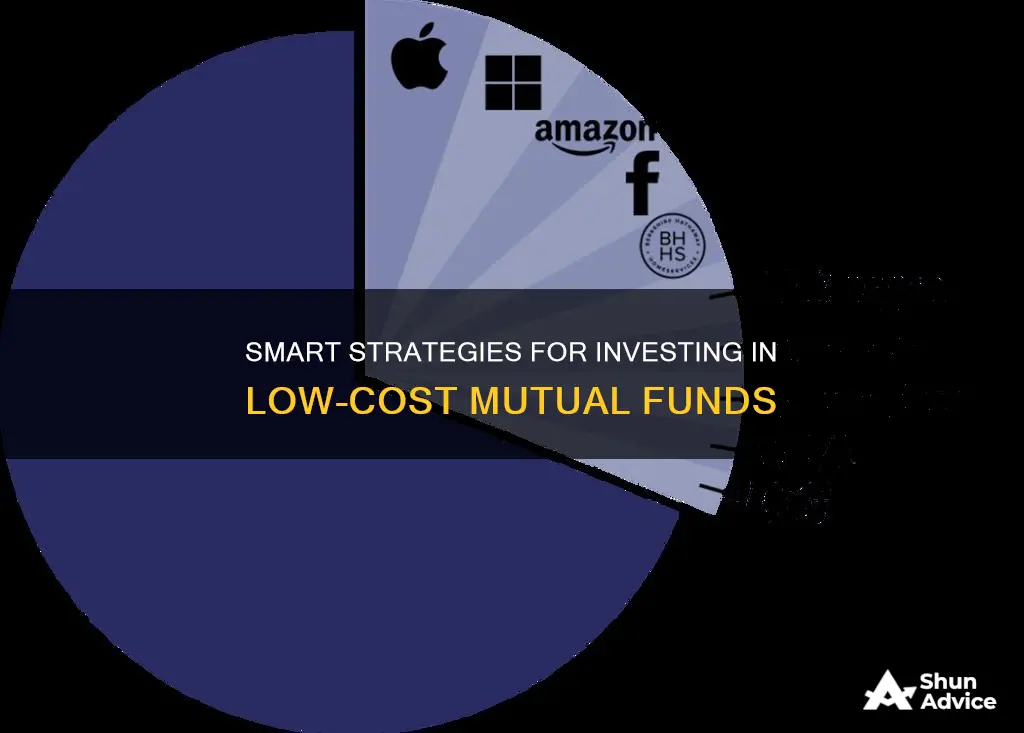
Index funds are a great way to build wealth over the long term. They are a group of stocks that mirror the performance of an existing stock market index, such as the S&P 500. This means that instead of trying to beat the market, they try to be the market by buying stocks of every firm listed on a market index. This makes them a passive management strategy, and they are often used to balance the risk in an investor's portfolio. Index funds are also less expensive than actively managed funds, and they typically carry less risk than individual stocks.
When it comes to investing in index funds, it's important to have a goal in mind. For example, if you're looking to make a quick profit, you may be more interested in individual stocks. On the other hand, if you're looking to grow your money slowly over time, index funds may be a better option. It's also crucial to research different index funds and consider factors such as company size, geography, business sector, and asset type.
When choosing a fund, cost is a significant factor. Index funds are typically cheap to run because they are automated to follow the shifts in value in an index. However, they still carry administrative costs, which are subtracted from each shareholder's returns as a percentage of their investment. Therefore, it's essential to compare expense ratios when selecting a fund.
To purchase an index fund, you can go through a mutual fund company or a brokerage. You will need to open an investment account, such as a brokerage account, individual retirement account (IRA), or Roth IRA, and then buy the fund. It's also important to keep an eye on your index funds over time to ensure they are performing as expected.
| Characteristics | Values |
|---|---|
| Investment type | Mutual funds |
| Investment strategy | Buy-and-hold |
| Investment goal | Long-term wealth building |
| Investment approach | Passive |
| Investment focus | Broad market indexes |
| Investment costs | Low fees and expense ratios |
| Investment selection | Diversified portfolio |
| Investment research | Fund screening tools |
| Investment style | Index funds |
| Investment advantages | Tax efficiency |
What You'll Learn

Understand the benefits of low-cost funds
Low-cost mutual funds can be a great investment option, offering a simple and effective way to grow your money. Here are some of the key benefits:
Cost Efficiency
The most obvious benefit of low-cost mutual funds is their cost-efficiency. The less you pay in fees and expenses, the more money you get to keep. Low-cost funds can help you save significantly over time, as the fees are a consistent drag on net returns year after year. For example, Vanguard's average mutual fund and ETF expense ratio is 82% less than the industry average. This means that you get to keep a larger portion of your investment returns.
Diversification
Mutual funds are an excellent way to diversify your portfolio without having to select individual stocks or bonds. They provide instant diversification, often by investing in every stock within a particular index. This reduces the risk associated with investing, as your money is spread across a wide array of assets. Most mutual funds will invest in anywhere from 50 to 200 different securities, and some stock index funds own 1,000 or more individual stock positions.
Professional Management
Mutual funds are professionally managed, meaning you get the benefit of experienced investment teams setting the fund's strategies, researching investments, making trades, and monitoring the fund's performance. This advanced portfolio management is a significant advantage, especially for those who may not have the time or expertise to actively manage their investments.
Convenience
Mutual funds are also very convenient. They are easy to buy and understand, typically having low minimum investment requirements. They are traded once per day at the closing net asset value (NAV), eliminating price fluctuations throughout the day. This also removes the need to constantly monitor the market, making them suitable for those with a long-term investment horizon.
Affordability
Low-cost mutual funds offer an affordable way to invest in a diverse range of stocks or bonds without paying transaction fees for each stock held. This makes them a great option for those who want to invest in the stock market but may not have a large amount of capital to start with.
Overall, low-cost mutual funds provide a cost-effective, convenient, and relatively low-risk way to invest your money and grow your wealth over time.
T. Rowe Price Funds: Cruise Investment Options Explored
You may want to see also

Research index funds
Index funds are a type of mutual or exchange-traded fund (ETF) that tracks the performance of a market index, such as the S&P 500, by holding the same stocks or bonds or a representative sample of them. They are defined as investments that mirror the performance of benchmarks like the S&P 500 by mimicking their makeup.
Index funds are considered passive investments, and their managers aim to replicate the index without active management. They are a simple, no-fuss way to gain exposure to a broad, diversified portfolio at a low cost for the investor. They are also passively managed, which often results in lower expense ratios.
When researching index funds, it's important to consider the geographic location of the investments, the market sector, and the market opportunity. You should also examine the fund's expenses, taxes, and investment minimums.
- Fidelity ZERO Large Cap Index
- Vanguard S&P 500 ETF
- SPDR S&P 500 ETF Trust
- IShares Core S&P 500 ETF
- Schwab S&P 500 Index Fund
- Shelton NASDAQ-100 Index Direct
- Invesco QQQ Trust ETF
- Vanguard Russell 2000 ETF
- Vanguard Total Stock Market ETF
- SPDR Dow Jones Industrial Average ETF Trust
Smart Mutual Fund Investments with 10 Lakhs
You may want to see also

Compare fund fees
When comparing fund fees, it's important to consider the following:
Investment Objective
Firstly, determine your investment goals, such as long-term wealth accumulation, income generation, or portfolio diversification, and choose an index fund aligned with those objectives. For example, if you're seeking to build wealth over the long term, you may opt for a fund that mirrors a broad stock market index like the S&P 500.
Risk Tolerance
Next, assess your risk tolerance and select a fund that aligns with your risk profile. Generally, large-cap index funds, which follow large-cap markets like the S&P 500 or the Dow Jones Industrial Average, are considered less risky than mid-cap or small-cap funds.
Expense Ratio
Expense ratios are fees subtracted from each fund shareholder's returns as a percentage of their overall investment. These fees can significantly impact long-term profits, so it's crucial to compare the expense ratios of different index funds. Remember, even small differences in expense ratios can lead to substantial differences in returns over time.
Tracking Error
Evaluate the fund's ability to closely track the performance of the underlying index by examining its tracking error, which measures the deviation from the index's returns. A fund with a high tracking error may not effectively mirror the index, potentially leading to lower returns.
Fund Manager and Fund House
Consider the reputation and track record of the fund manager and the fund house. Assess their financial philosophy and management style to ensure they align with your investment goals and risk tolerance.
Taxation
Finally, understand the tax implications of investing in different types of index funds, as the tax treatment may vary depending on the fund structure (e.g., mutual fund or ETF). For example, owning certain funds outside of tax-advantaged accounts, such as a 401(k) or an IRA, may trigger capital gains taxes.
By carefully considering these factors, you can make an informed decision when choosing an index fund that aligns with your financial goals and risk tolerance.
Mutual Funds: India's Smart Investment Choice
You may want to see also

Diversify your portfolio
Diversifying your portfolio is a crucial aspect of investing. It's a management strategy that involves blending different investments to yield higher returns and lower risks. Here are some detailed tips to help you diversify your portfolio when investing in low-cost mutual funds:
- Expand Your Investment Horizons: Diversify beyond traditional investments like stocks and bonds. Consider allocating funds to commodities, real estate, exchange-traded funds (ETFs), and equities. Spread your investments across different sectors, such as pharmaceuticals, education technology, and information technology, to mitigate risks associated with sector-specific fluctuations.
- Leverage Index Funds: Index funds offer a cost-effective way to diversify your portfolio. They aim to track the performance of a particular stock market index, such as the S&P 500 or the FTSE 100. By investing in index funds, you gain exposure to a broad range of shares or bonds at a low cost. Choose index funds that track prominent indexes, providing diversified exposure to top-performing companies.
- Consider Bond Funds: Adding fixed-income funds or bond funds to your portfolio can further hedge it against market volatility and uncertainty. These funds aim to match the performance of broad bond market indexes. Bond funds tend to provide stable returns and are less correlated with the stock market, offering income to balance out total returns when stock prices fall.
- Geographic Diversification: Look beyond domestic markets and consider investing in international funds or ETFs focused on emerging markets or specific regions with growth potential. This enables you to access diverse investment opportunities and reduce dependency on a single market's conditions.
- Choose Low-Cost Funds: When investing in mutual funds, consider funds with low expense ratios and management fees. Low-cost funds, such as those offered by Fidelity and Vanguard, allow you to keep more of your investment returns in your pocket. Vanguard, for example, has an average mutual fund and ETF expense ratio that is 82% less than the industry average.
- Regularly Rebalance Your Portfolio: Periodically review and adjust your investments based on changing market conditions and your investment goals. This ensures your portfolio remains aligned with your risk tolerance and financial objectives.
Remember, diversification is key to mitigating risk and enhancing stability within your investment strategy. By following these tips, you can create a well-diversified portfolio that positions you to weather market fluctuations and unlock the potential for long-term growth.
Mutual Funds: Diversified, Safer Investment Option
You may want to see also

Choose a fund provider
Choosing a fund provider is an important step in investing in low-cost mutual funds. Here are some things to consider when selecting a fund provider:
Investment Objective
First, you need to determine your investment goals. Are you looking for long-term wealth building, income generation, or portfolio diversification? Different fund providers may have funds that are better suited to different investment objectives, so it's important to align your goals with the offerings of the fund provider.
Risk Tolerance
Another key consideration is your risk tolerance. Assess your risk appetite and choose a fund provider that offers funds matching your risk profile. For example, large-cap index funds are generally considered less risky than mid-cap or small-cap funds. Make sure to review the fund's prospectus or offering documents to understand the level of risk involved.
Expense Ratio
The expense ratio is the cost of managing the fund, expressed as a percentage of the fund's assets. It's important to compare the expense ratios of different fund providers, as lower fees can significantly impact your long-term returns. Look for fund providers that offer low-cost funds or exchange-traded funds (ETFs).
Tracking Error
Evaluate the fund provider's ability to closely track the performance of the underlying index by analyzing the tracking error. The tracking error measures how much the fund's returns deviate from the index's returns. A lower tracking error indicates that the fund is better at replicating the index's performance.
Reputation and Track Record
Consider the reputation and track record of the fund provider. Look for providers with a long history of successful fund management and a strong reputation in the industry. Review the performance of their funds over time and compare it to the performance of the underlying index.
Fund Selection and Diversity
Evaluate the selection of funds offered by the provider. Do they offer a diverse range of funds that align with your investment goals and risk tolerance? Consider the types of funds they offer, such as large-cap, mid-cap, small-cap, sector-specific, or thematic funds. Diversifying your investments across different types of funds can help reduce risk and improve long-term returns.
Convenience and Services
Trading Costs
Finally, consider the trading costs associated with the fund provider. Compare the commission or transaction fees charged by different providers, as these can eat into your investment returns. Look for providers that offer low-cost or no-transaction-fee funds.
Remember to do your research and compare multiple fund providers before making a decision. Review their offerings, fees, performance track record, and customer reviews to make an informed choice that aligns with your investment goals and risk tolerance.
Cocolife Fixed Income Fund: A Smart Investment Strategy
You may want to see also
Frequently asked questions
An index fund is a group of stocks that aims to mirror the performance of an existing stock market index, such as the S&P 500. Index funds don't require active management and tend to carry less risk than individual stocks.
Index funds buy stocks from every firm listed on a market index, aiming to match the performance of the index as a whole. This passive management strategy means there is no need to actively decide which stocks to buy or sell.
Index funds typically perform better than actively managed funds over the long term and bring better returns to investors. They are also less expensive, as there are no fees for active management.
When choosing an index fund, consider your investment goals, risk tolerance, expense ratios, tracking error, and the fund manager's track record. ETFs, a type of index fund, generally have lower expense ratios.
You can buy an index fund directly from a mutual fund company or a brokerage, or as an exchange-traded fund (ETF) on a stock market. You will need an investment account, such as a brokerage account or an individual retirement account (IRA).
These questions provide a basic overview of investing in low-cost mutual funds through index funds. It is important to do your own research and consult a financial advisor before making any investment decisions.







